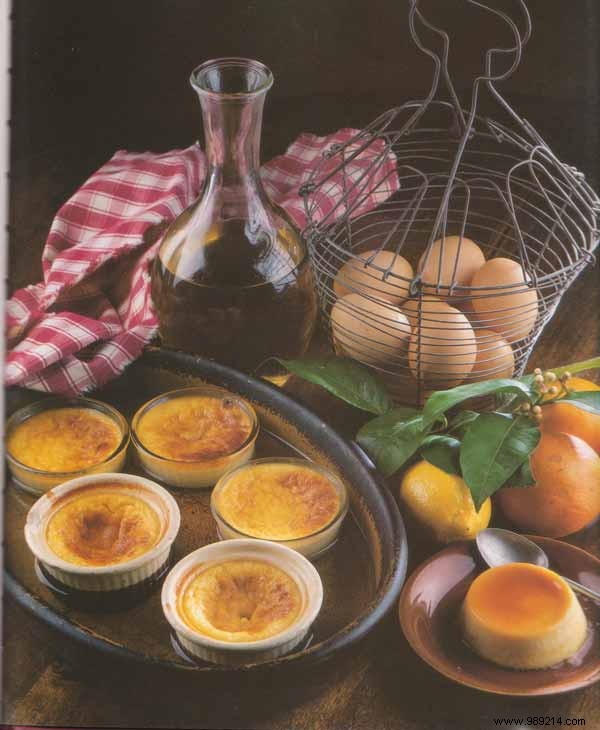This Languedoc dessert, also called Homer's cream, can be garnished with pistachios, pine nuts or almonds.

Put the sugar cubes in a heavy-bottomed saucepan, add 4 tablespoons of water and cook over medium heat, swirling the pan occasionally, until thickened. the appearance of caramel. When it has taken on a pretty mahogany color that is not too dark, add 1 tablespoon of cold water to stop the cooking and put a lid on the pan. Stir the liquid caramel with a wooden spoon and divide it into six individual porcelain ramekins over a fire.
Wash the lemon and orange, then dry them. Zest each fruit in a wide spiral strip. Pour the milk into the pan, add the cream and bring to the boil, add the 2 zests and the wine, mix thoroughly, leave to simmer for a few moments, then remove the pan from the heat and cover. Leave to infuse without stirring for 30 minutes, then strain the contents of the pan. Warm it gently.
Break the eggs into a terrine, add the yolks and beat everything into an omelette, add the powdered sugar and mix, then slowly pour in the boiling milk, stirring constantly. Then divide this cream into the caramelized ramekins, then place them in a hollow baking dish, pour boiling water around them and cover with aluminum foil. Bake the creams in the oven at 180°C for about 30 minutes.
Remove the dish from the oven and leave to cool, then take the ramekins out of the bain-marie and let them cool again before putting them in the refrigerator for several hours so that the cream is well set and comes out of the mold easily Pass a blade along the rim before inverting each ramekin to unmold in one snap
Instead of citrus zest, you can use lime, ginger, or cinnamon
Text and photo source:Regional Cuisines of France